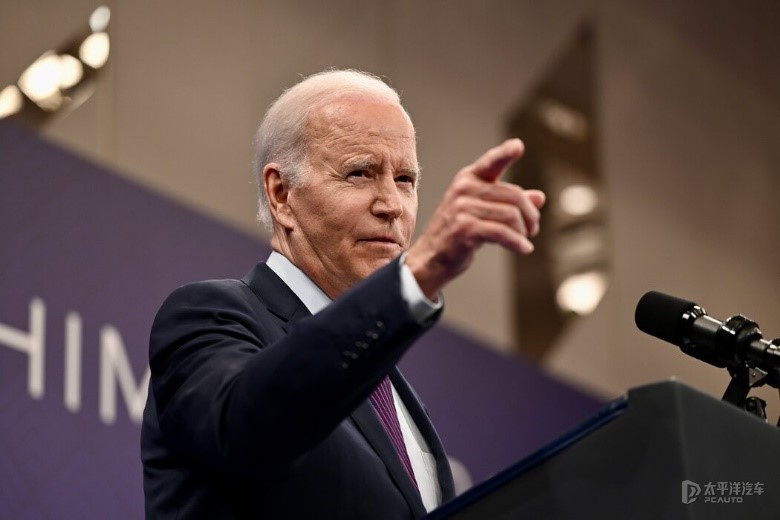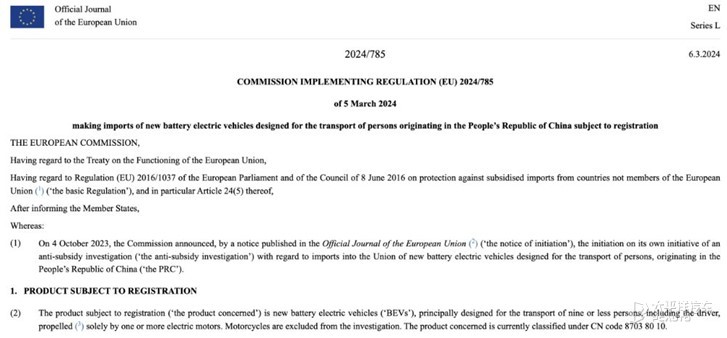Global Layout of China's Electric Vehicle Industry: Increased Taxes and Investigations in Europe and America, Tax Exemption in Thailand
 AshleyMay 15, 2024, 11:07 AM
AshleyMay 15, 2024, 11:07 AM
On May 14, the White House announced, imposed tariffs on $18 billion worth of goods imported from China, claiming this is to protect American workers and businesses. The areas where the U.S. government has imposed tariffs are mainly concentrated in industry and energy fields, including the imposition of four-fold tariffs on Chinese electric vehicles, increasing from 25% to 100%; the import tax on solar cells increases from 25% to 50%; tariffs on certain Chinese steel and aluminum imports increase from 7.5% to 25%.
The U.S. policy of imposing tariffs on China was not without warning. In March this year, U.S. Treasury Secretary Janet Yellen indicated before visiting China that "China's overcapacity distorts global prices and production models, harming American businesses and workers, and also hurting businesses and workers around the world." She assured that she would negotiate with Chinese officials on this issue.

In response, Chinese Foreign Ministry spokesperson Wang Wenbin said, "China has always opposed the unilateral imposition of tariffs in violation of WTO rules and will take all necessary measures to safeguard its legitimate rights and interests."

China's electric vehicles have always been influenced by policies in entering developed countries globally. The EU has registered an investigation due to suspicions that China's new energy vehicles are dumped at low prices due to policy subsidies. On March 6, the European Commission officially announced the EU 2024/785 implementing regulation, requiring Chinese-origin imported electric vehicles to be registered with customs for nine months from March 7. The current EU tariff on Chinese electric vehicles is 10%. The current registration cannot determine the result of the anti-subsidy investigation, but once confirmed, the EU will levy retrospective tariffs on registered electric vehicles.
According to the provisions of the EU Regulation on Foreign Subsidies Distorting the Internal Market, the anti-subsidy investigation should end within 13 months after it officially starts, temporary anti-dumping measures will be implemented within nine months after the investigation starts, and final trade measures will be determined within four months after the temporary measures are implemented or 13 months after the investigation starts. That is, the final report of the investigation will be released before November this year, and the temporary tariff measures may be decided in July.

Compared to the regulatory environment for electric vehicles from China in developed countries, Southeast Asian governments have a more open attitude towards them. From January 1, 2018, Thailand has implemented a zero tariff policy on electric vehicles imported from China, while actively attracting Chinese auto companies to set up factories in Thailand. Many Chinese automakers have chosen to follow this policy, including the official production of GWM Thailand factory in June 2021; the ground-breaking ceremony for BYD Thailand factory in March 2023 and its production in 2024; the ground-breaking ceremony for Neta Bangkok factory in March 2023, and so on.
If any infringement occurs, please contact us for deletion
Trending News

BYD Sealion 7 is not only cheaper than Tesla Model Y, what other differences do they have?
Is it better to buy the BYD Sealion 7 or the Tesla Model Y? This really makes one a bit hesitant, but before you make a decision, I recommend you take a good look at this article.

2026 Toyota Hilux Travo released, the brand-new exterior and interior are highly anticipated
If you're considering buying a Hilux, honestly, the comprehensive innovations in the ninth generation are worth waiting for. While the current model might still have some advantages in terms of reliability and price, the new model offers significant changes in terms of exterior and interior luxury, tech features, and powertrain options.

Jaecoo J7 VS Honda CR-V, which is the most worthwhile C-Segment SUV to buy
With an exterior that closely resembles a Land Rover, Jaecoo J7's sales experienced several months of rapid growth but have recently slowed down. Perhaps the market is nearing saturation, as Jaecoo J7 has already surpassed the once-dominant Honda CR-V in the C-Segment SUV category.

In Malaysia, which sliding door MPVs are available?
The numerous advantages of sliding door MPVs make many people fond of this type of vehicle. However, MPVs are not a mainstream choice in the car market, so many people might not know which MPVs are available domestically.

Which one is better, Honda City or Toyota Vios?
When choosing a compact sedan, Honda City and Toyota Vios are often two options that make people weigh repeatedly. You might be attracted to the dynamic design of the Vios but also be captivated by the City.
Popular Cars
Model Year
Car Compare
Car Photo

